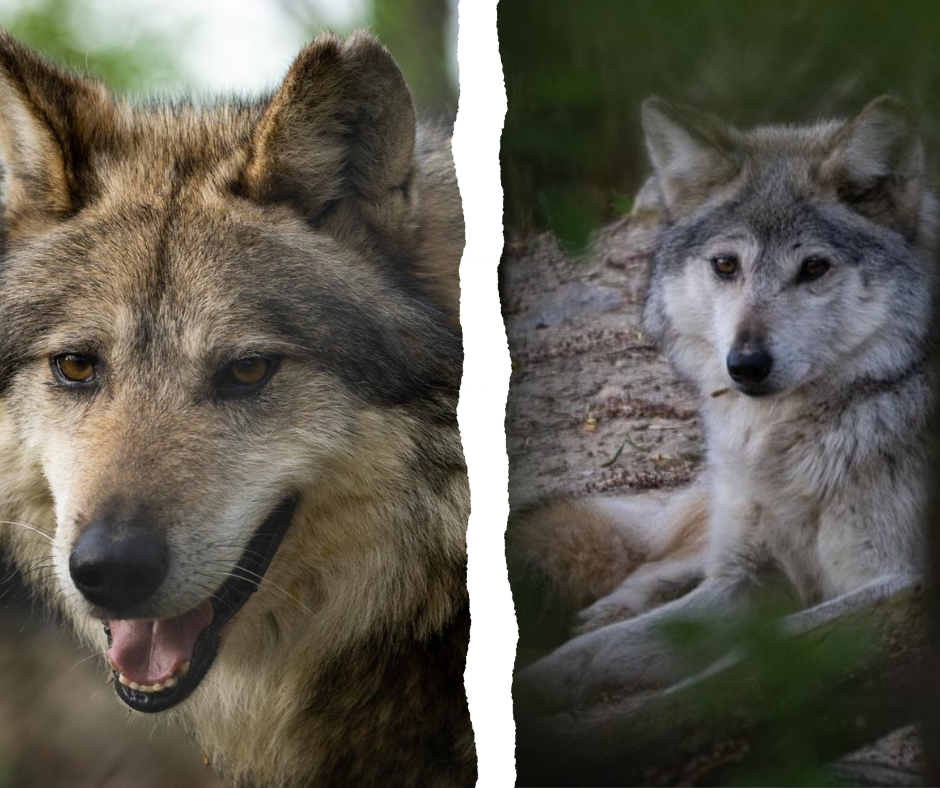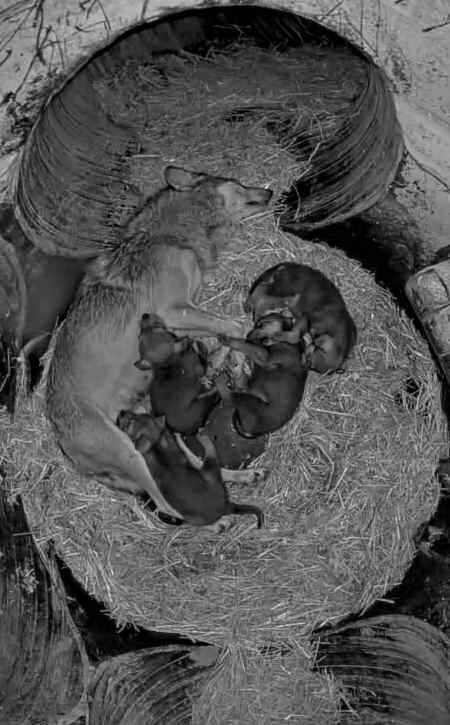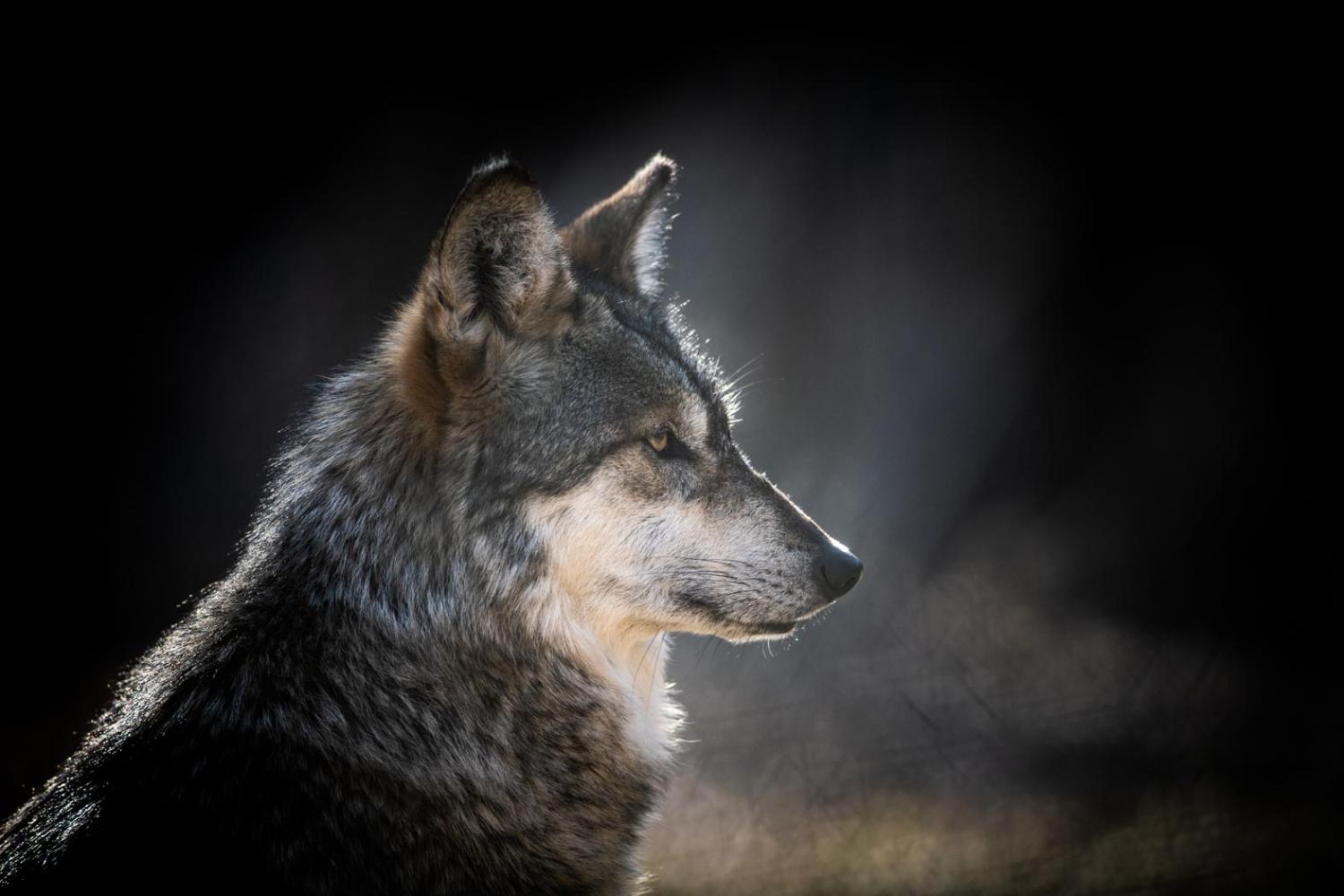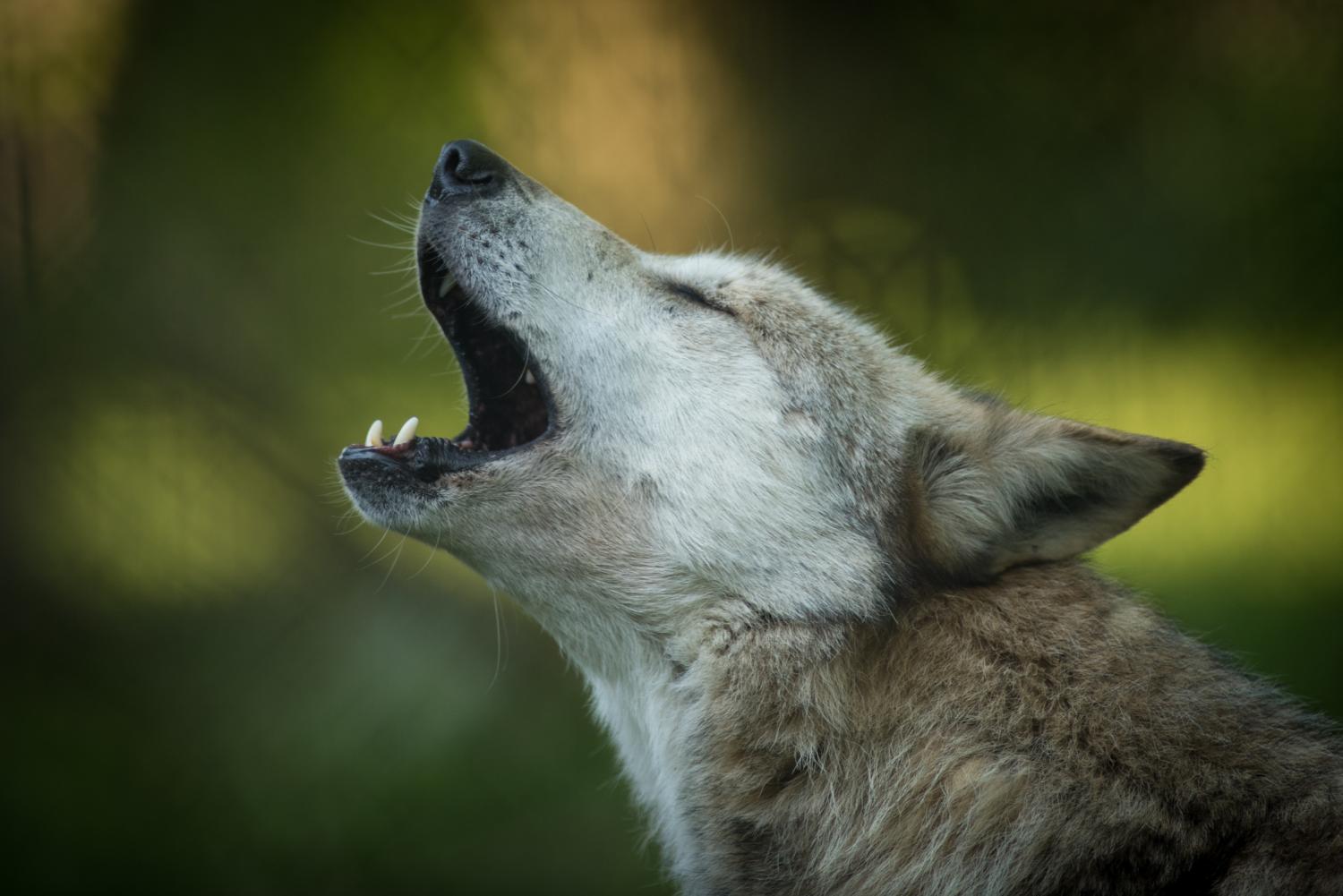Meet Winter and Storm.

The Columbus Zoo and Aquarium currently cares for two Mexican wolves:
- Winter, a female wolf born in 2016
- Storm, a male wolf born in 2016
Winter arrived at the Columbus Zoo on Dec. 17, 2018 from the Wolf Conservation Center in South Salem, New York, and Storm arrived on Dec. 11, 2018 from the Endangered Wolf Center in Eureka, Missouri. The two were paired at Columbus Zoo through a collaborative effort between the Association of Zoos and Aquariums’ (AZA) Mexican Gray Wolf Species Survival Plan® (SSP) and the U.S. Fish and Wildlife Service’s (USFWS) Wolf Recovery Plan, which works to help reintroduce wolves to the southwestern United States.
Winter and Storm have successfully raised four wolf pups, born in 2019, contributing to the survival of the species. The pups were the first born at the Zoo in 14 years.

They’re a Fascinating Species.

Commonly referred to as el lobo (“the wolf” in Spanish), the Mexican wolf is the most endangered subspecies of gray wolf in North America. Roughly half the size of their cousins, they normally weigh between 50-80 pounds. Their gray fur can also be mixed with other colors such as rust, black, and cream.
Mexican Wolf Facts:
- In the wild, they can be found near lakes, rivers, and streams in mountainous forests and woodlands in the southwest United States and Mexico.
- Their dens are made from burrows or natural holes.
- Their diet consists of elk, mule, deer, rabbits and other small mammals, and they work as a pack to hunt their food.
- Mexican wolves have a complex social structure and an intricate communication system that includes scent marking, body postures, and numerous vocalizations such as howling, barking, whining, and growling.
- They live in packs, consisting of an adult mated pair and their offspring, often from several generations. The alpha pair is usually monogamous, and they are typically the only breeding animals in the pack. Although highly variable, a typical Mexican wolf pack might consist of 4 - 8 animals, with a territory encompassing up to several hundred square miles.
They’re Social Carnivores.
As with any carnivore at the Columbus Zoo, meat is given to the wolves as part of their customized nutrition guide. To help promote pack mentality, the wolves are given frozen deer legs, donated by a vetted local provider, within their habitat. This practice may sometimes be visible to guests, and the Zoo will place signage at the habitat entrance to alert guests of the feeding activity.
Why is this important?
- Meat, bone, and marrow are natural diet items for Mexican wolves.
- Deer leg feedings allow them to work as a pack for their food.
- The feeding simulates a hunt in the wild.
- Chewing on bones help keep their teeth clean.
They're Considered Endangered.
Considered extinct in the wild in 1976, primarily due to increased conflict with humans and their livestock, the Mexican wolf only began making a comeback due to the efforts of USFWS, who started reintroduction programs to conserve the species.

Following decades of hard work by organizations like the USFWS, the Association of Zoos and Aquariums (AZA), zoos like the Columbus Zoo, and many more, more than 240 Mexican wolves live in their native ranges today.
Member organizations of the AZA also work together to help save animals from extinction as part of the AZA SAFE program (Saving Animals from Extinction), which focuses on the collective expertise within AZA-accredited zoos and leverages their massive audiences to save animals. The latest animal to be added to the SAFE species list is the Mexican wolf.
The Columbus Zoo is Part of the Mexican Wolf Recovery Program.
The U.S. Fish and Wildlife Service recovery plan for this endangered species includes managing Mexican wolves in professional care to maintain genetic diversity and occasionally breed them for reintroduction. The Columbus Zoo has participated in this effort since 1992 by caring for and breeding wolves, 59 in total, producing 39 surviving pups.
The Zoo currently participates in the recovery plan by caring for wolves that may one day produce pups for reintroduction to their native range. With the expansion and redevelopment of the North America region at the Zoo, participation in this recovery plan will evolve and grow.
They Need Your Help.
Mexican wolves still have a long way to go and still face a lot of threats. How can Zoo guests help the species ability to thrive?
- Support our redevelopment efforts by donating to the Columbus Zoo.
- Share this information with your family and friends.
- Read stories on the USFWS’ robust website about the wolf recovery program.
- Join us for Wolf Awareness Week at the Columbus Zoo and Aquarium, celebrated every year in October!










